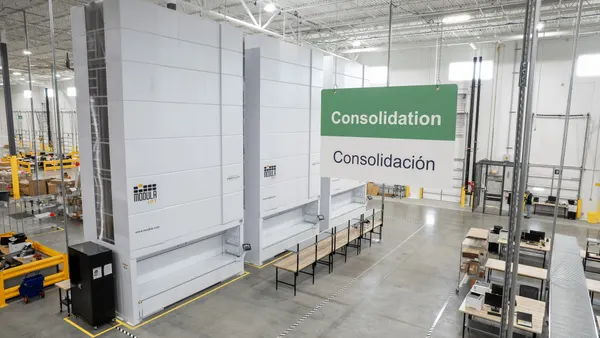Dive Brief:
- Lamb Weston is working to regain customers' confidence after a shaky transition to a new enterprise resource planning system, which battered the company's sales and order volumes, executives said in a third quarter earnings call.
- The potato products supplier had reduced visibility into its distribution center inventory after the transition for its central systems in North America, which pressured its ability to fulfill customer orders more than anticipated. Lower fulfillment rates hurt net sales by $135 million for the quarter that ended Feb. 25.
- The transition was part of Lamb Weston's yearslong push to upgrade its information systems and ERP infrastructure to SAP. The next phases include transitioning plants in North America and rolling out the system globally.
Dive Insight:
Lamb Weston's recent challenges associated with the ERP transition touched various aspects of its operations. The undertaking impacted inventory management, the receiving and processing of orders, customer invoicing and the warehousing, scheduling and transportation of shipments.
The company partnered closely with third-party and company-owned distribution centers to minimize the impact, President and CEO Tom Werner said on the earnings call last week.
"This included co-locating Lamb Weston team members at our distribution centers to resolve data errors and processing issues in real time and adjusting systems and processes for balancing inventory between distribution centers and SAP," Werner said.
Despite Lamb Weston's preparations, Werner said the transition was more difficult than expected. Sales volume declined 16%, with about 8 percentage points of that tied to unfilled customer orders from the ERP transition. Mixed-product loads were pressured more so than shipments of single-product orders.
"Higher margin, lower volume customers which typically have more complex mixed product orders were harder to fill until the inventory visibility issues related to the ERP transition were resolved," CFO Bernadette Madarieta said on the call.
Lamb Weston believes its order fulfillment woes are behind it. By the quarter's end, it restored inventory visibility and improved fulfillment rates to pre-transition levels. Now, the company's direct sales force is actively engaging customers to boost trust following the issues, Werner said.
"We understand that some customers affected by either delayed or canceled shipments may have temporarily secured supply from alternative sources until they gain confidence in our service levels," he said.
With central systems in North America now transitioned, the program's next phase will be at Lamb Weston's plants on the continent, Madarieta said. It will start with a pilot location where all the system's capabilities will be tested before rolling out to other plants in waves.
"Some of the next steps are different in that we're able to go live at one plant and isolate, and therefore limiting the impact," Madarieta said. "Whereas with all of the central systems that were affecting customer ordering, inventory management and others this time, that was more difficult."
This story was first published in our Operations Weekly newsletter. Sign up here.














